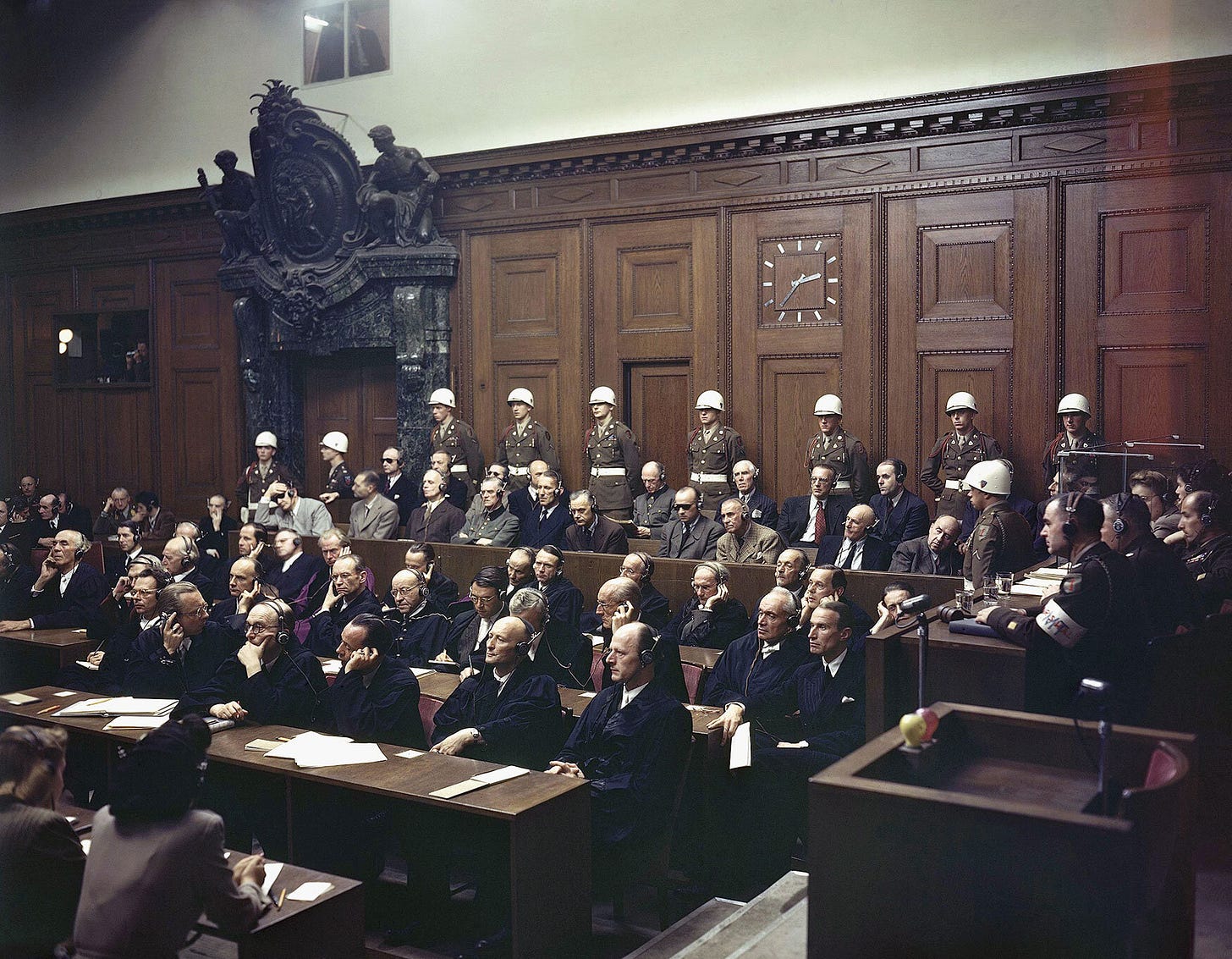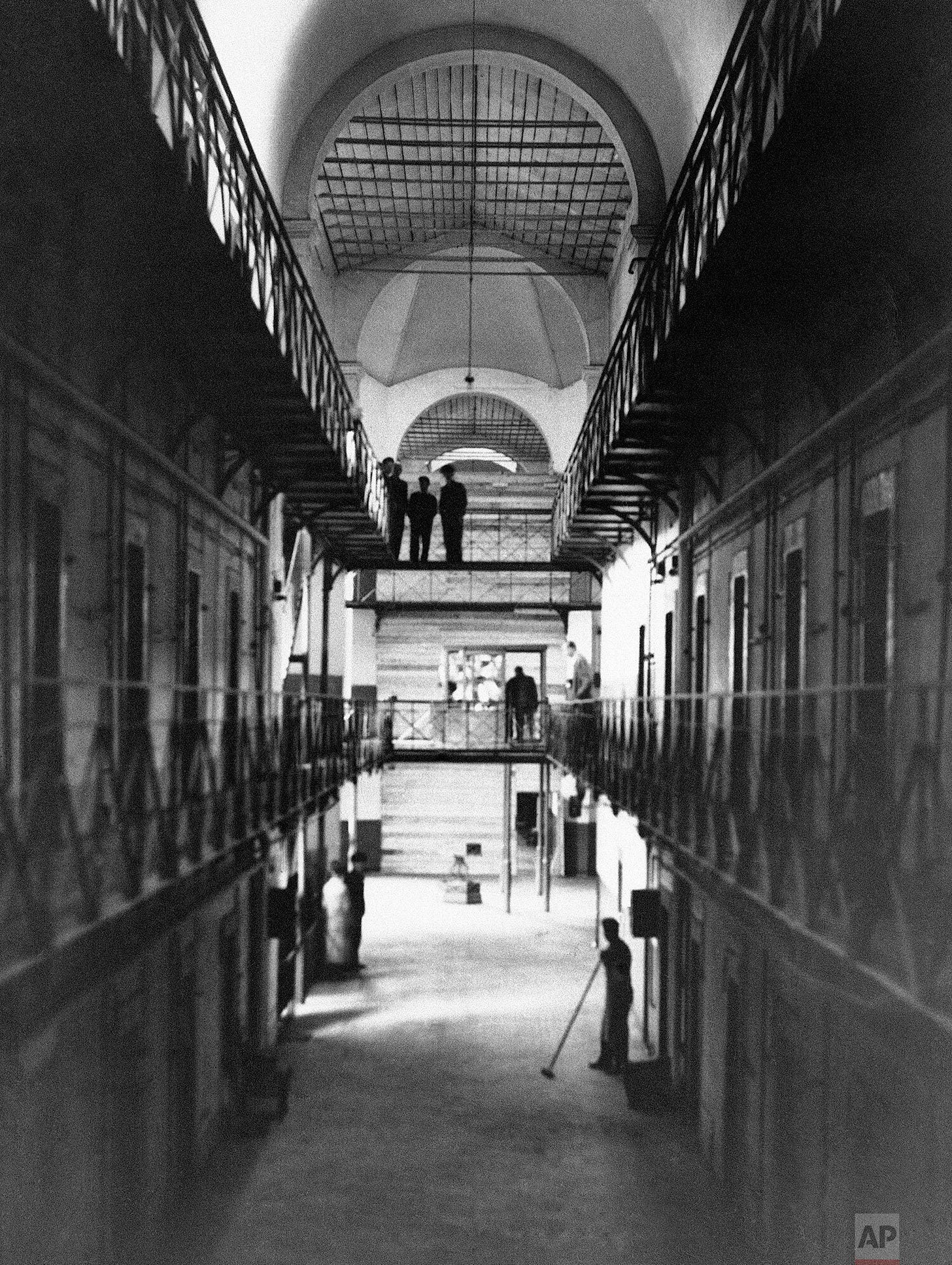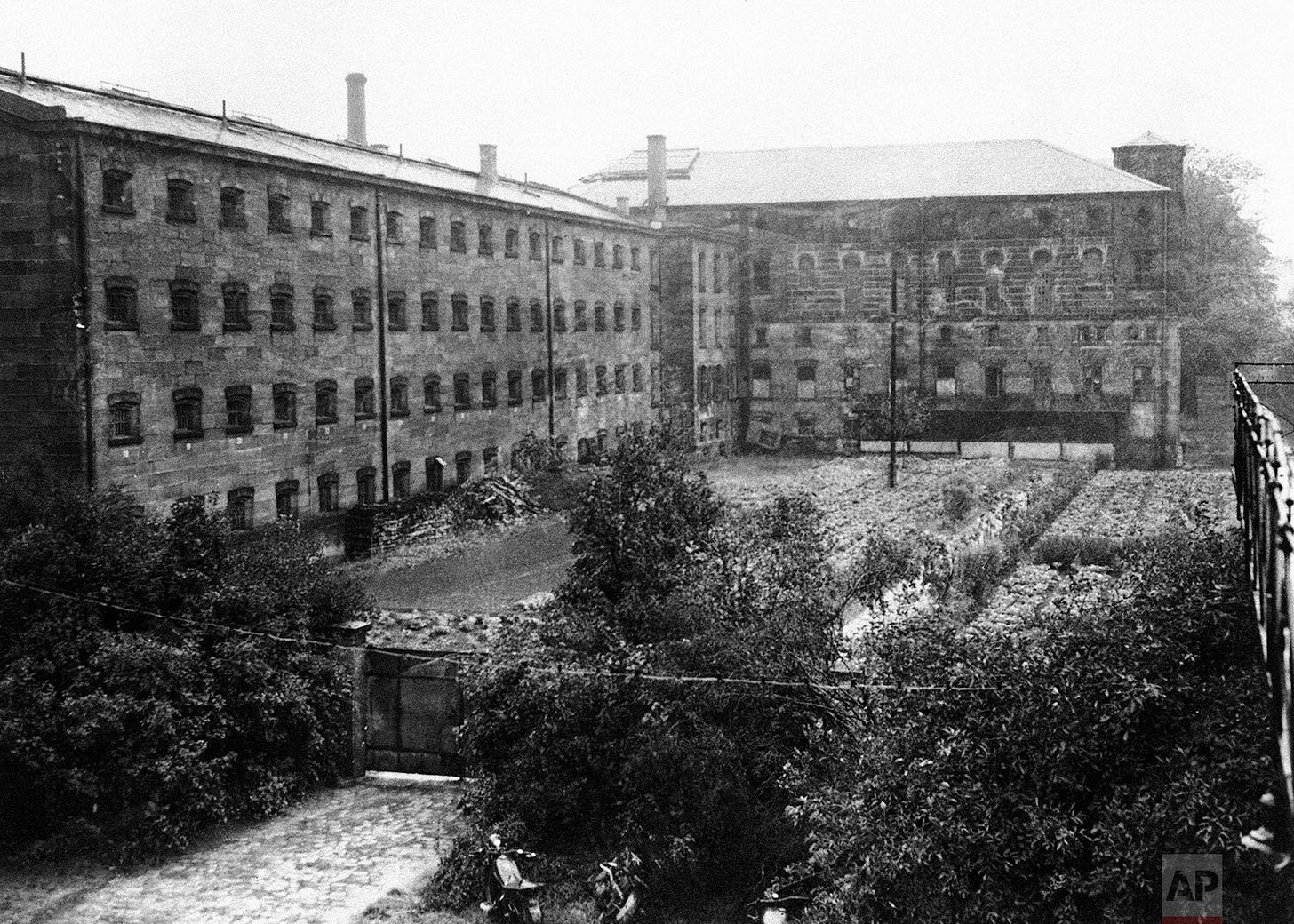The Nuremberg Trials: Iconic Photos of Justice Unfolding - Part 1
Reflecting on 75 years since the monumental Nuremberg Trials began, a turning point for international justice.
Inside the Nuremberg prison, August 1945: The austere cell block designated to house high-ranking Nazi war criminals awaiting their historic trial. A boarded-up section reserved for key defendants hints at the gravity of the impending proceedings.
An external view of the Nuremberg prison, strategically adjacent to the courtroom, captured in August 1945. This facility was purpose-built to securely house major Nazi war criminals throughout their landmark trials.
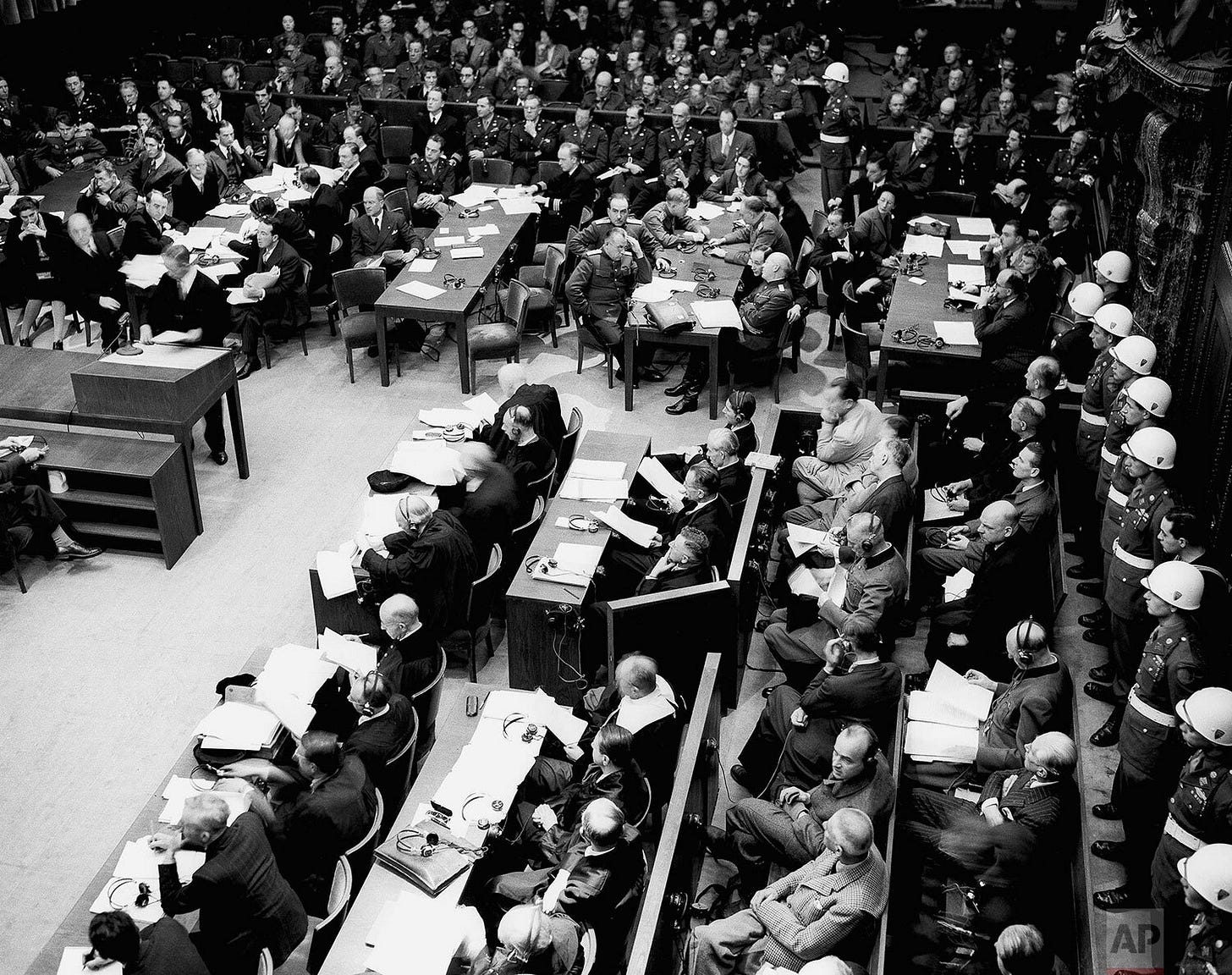
The solemn atmosphere of the Nuremberg courtroom on November 20, 1945, during its inaugural morning session. In the foreground, left, the defendants are seated, flanked by watchful guards and their legal counsel, as history unfolds.

Reichsmarshal Hermann Goering defiantly stands in the prisoner's dock at the Nuremberg War Crimes Trial on November 21, 1945, pleading 'not guilty' to the International Military Tribunal Indictment. He wears court headphones, listening intently to the proceedings.
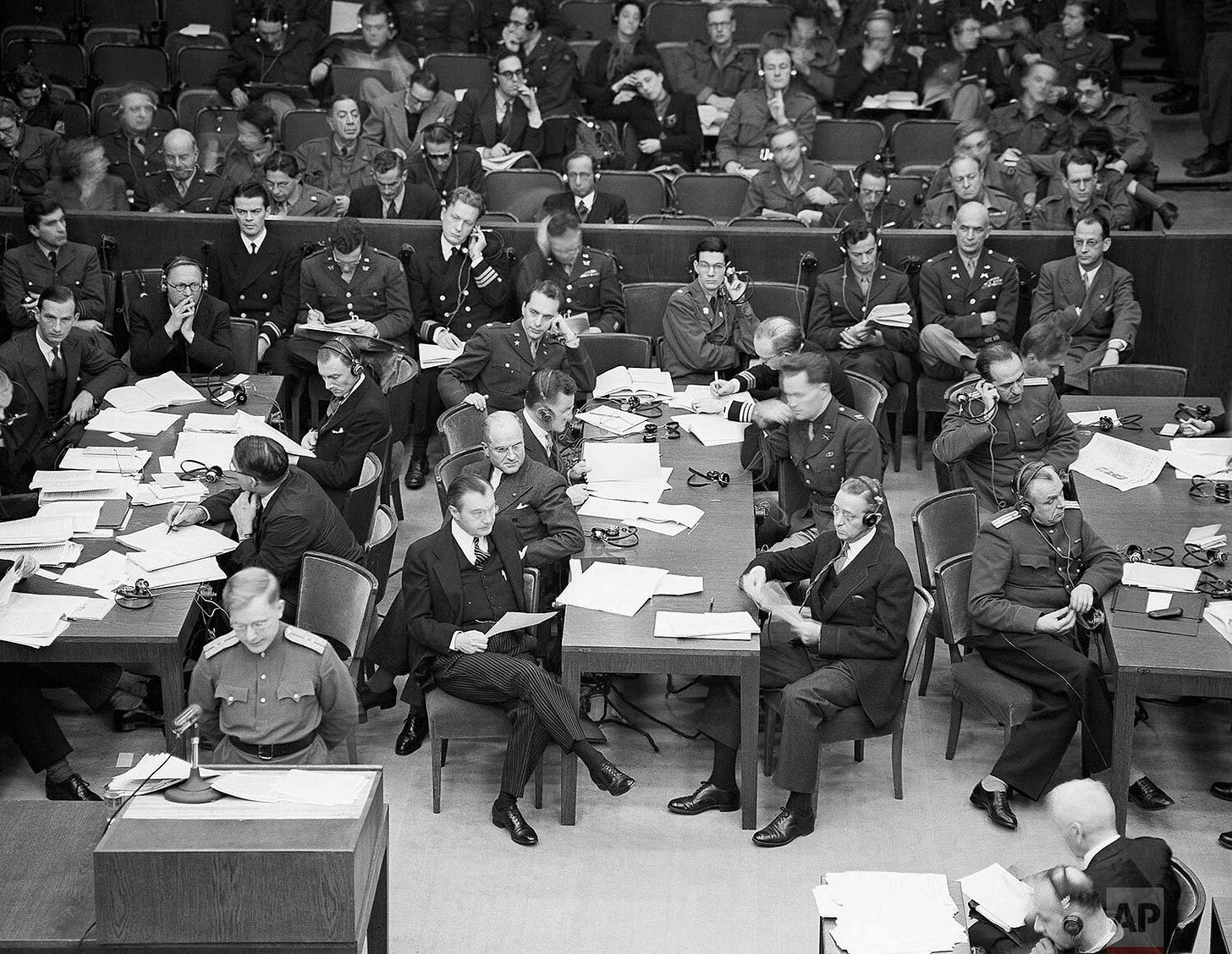
The Russian assistant prosecutor, lower left, reads the damning indictment in Nuremberg on November 28, 1945. American chief prosecutor Justice Robert Jackson and his assistant are seated at the center table, representing the Allied pursuit of justice.
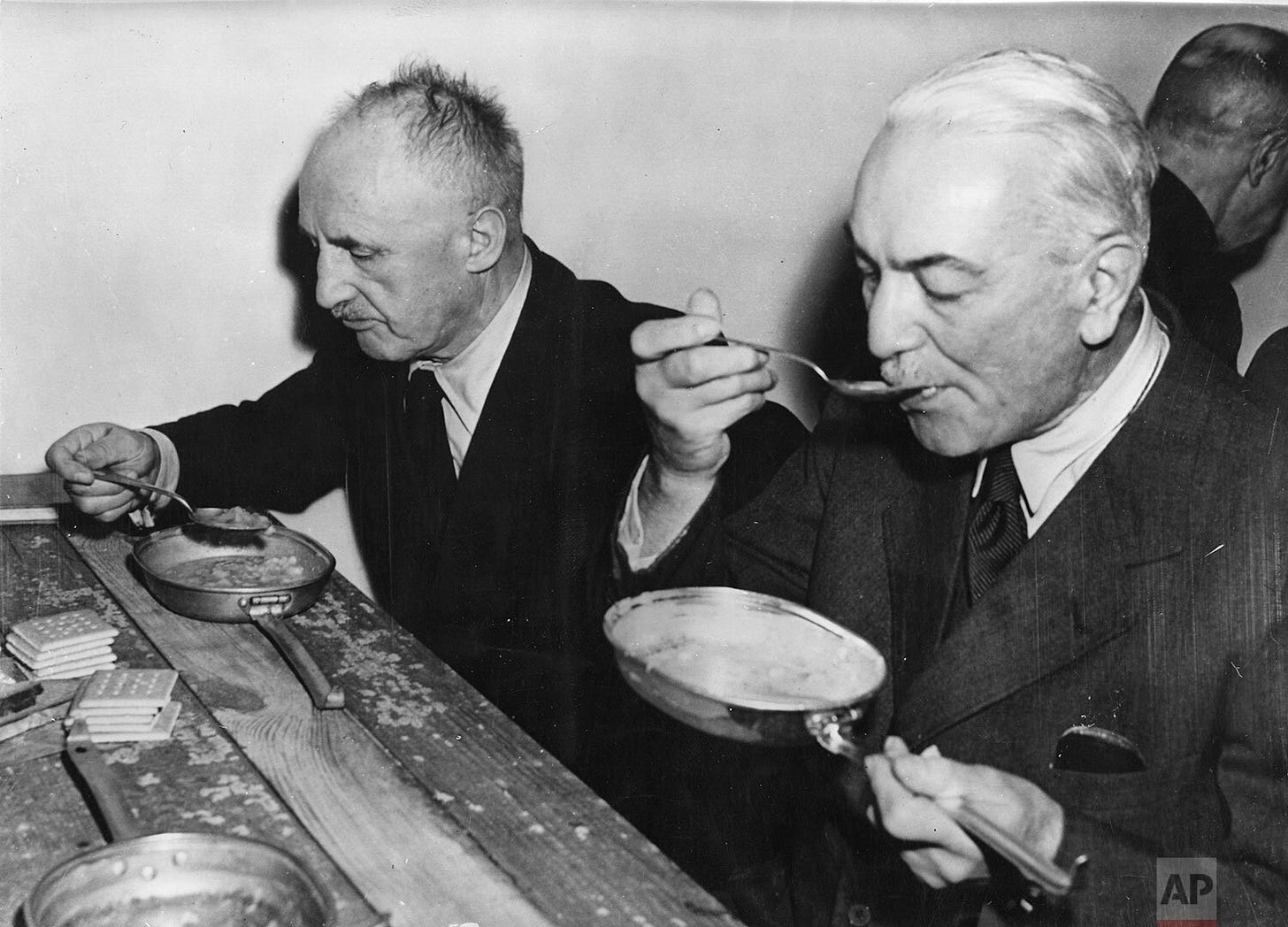
A rare glimpse of humanity amid the trials: Former German Foreign Minister Dr. Konstantin von Neurath and Nazi propagandist Julius Streicher eat lunch from U.S. Army mess tins on a bare table within Nuremberg's Palace of Justice, November 29, 1945.
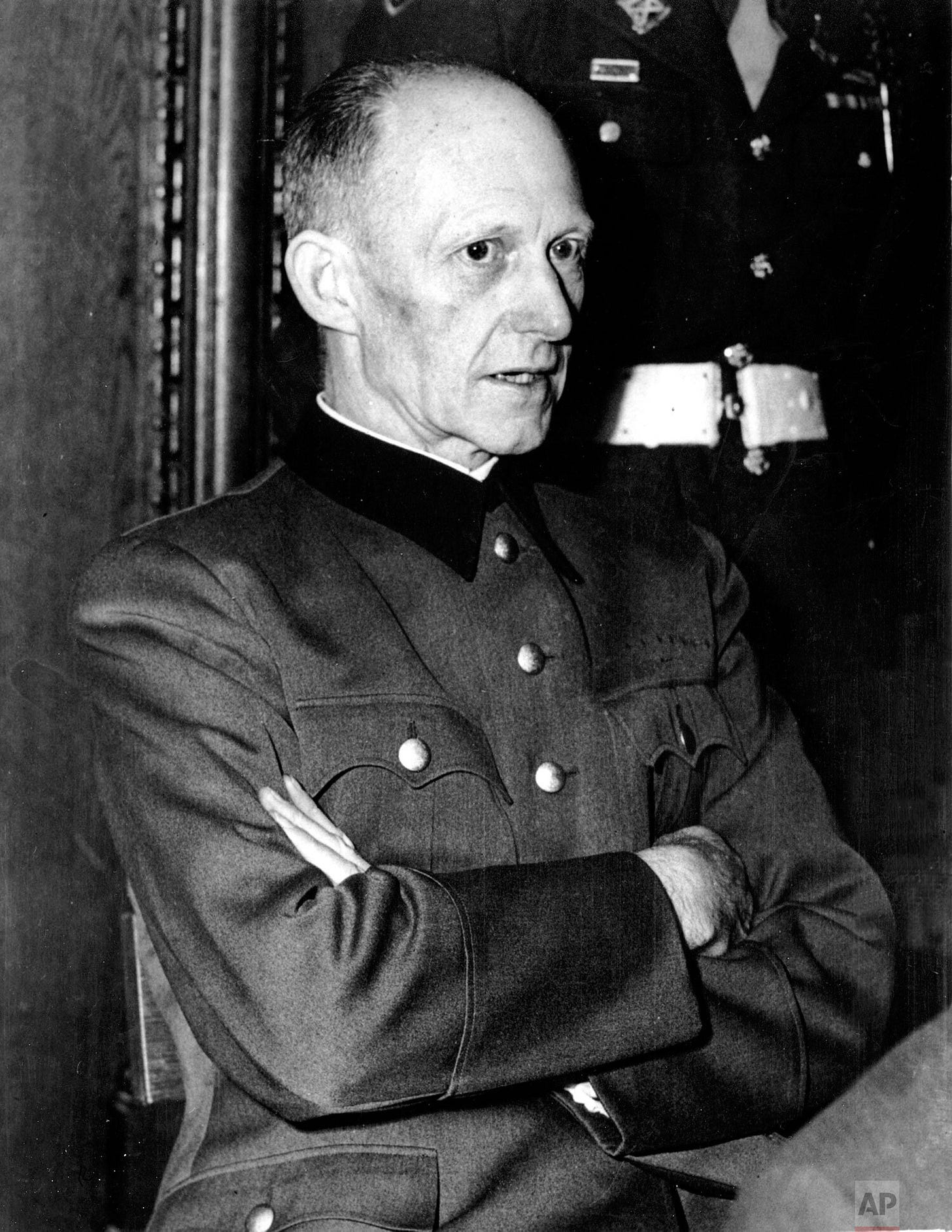
Defendant Alfred Jodl, a former general and one of Adolf Hitler's key military advisors, observed with arms crossed during the Nuremberg War Crimes Trial on November 30, 1945, facing the consequences of his wartime role.
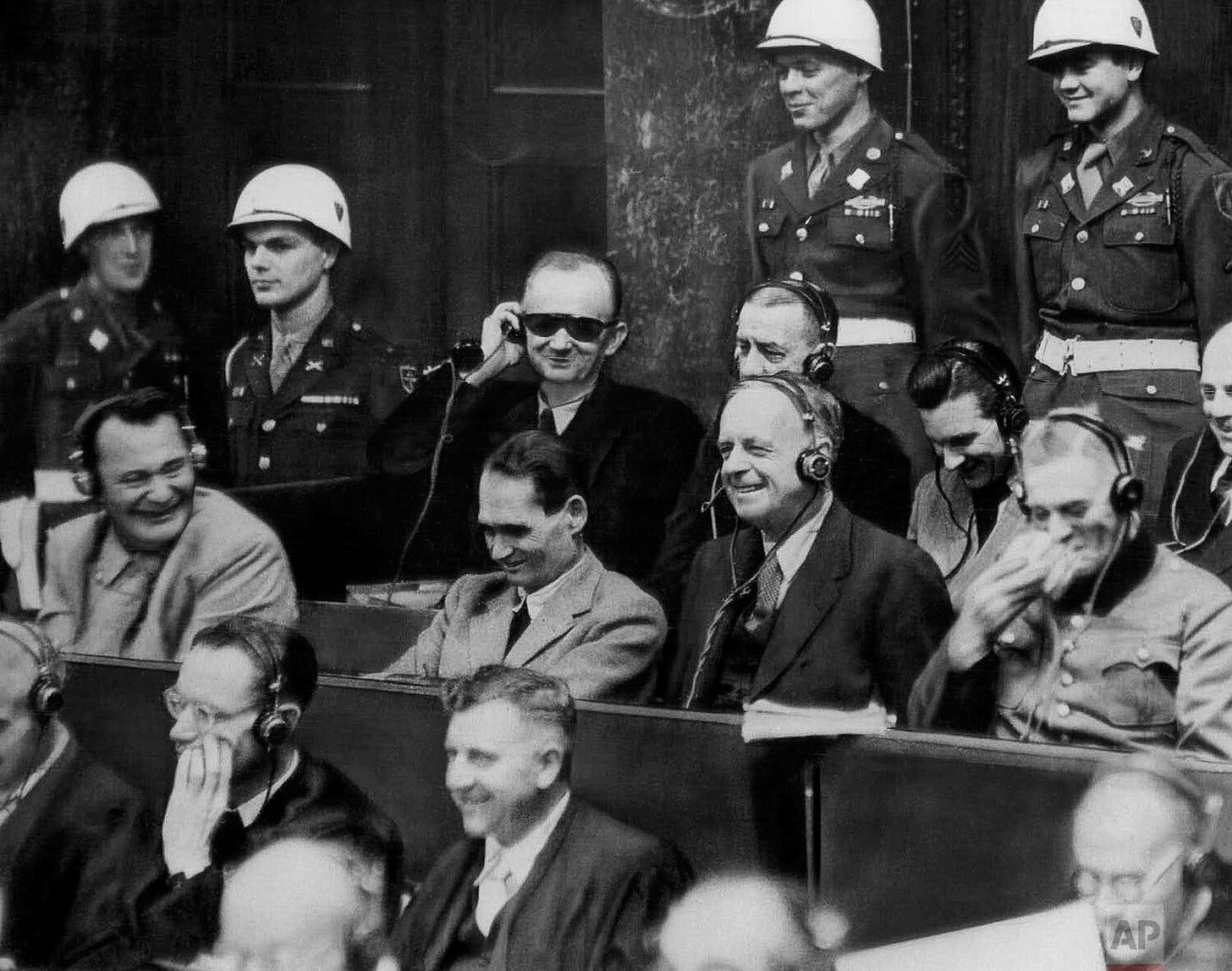
A shocking display of defiance: Hermann Goering, left, leads Nazi war criminals in laughter as evidence is presented during the Nuremberg Trials on November 30, 1945, a grim moment even the American guards observe with intrigue.

Official portrait of Wilhelm Keitel, Chief of the General Staff, taken November 2, 1945. Keitel was one of the prominent Nazi leaders brought to justice as a war criminal at the Nuremberg Trials.
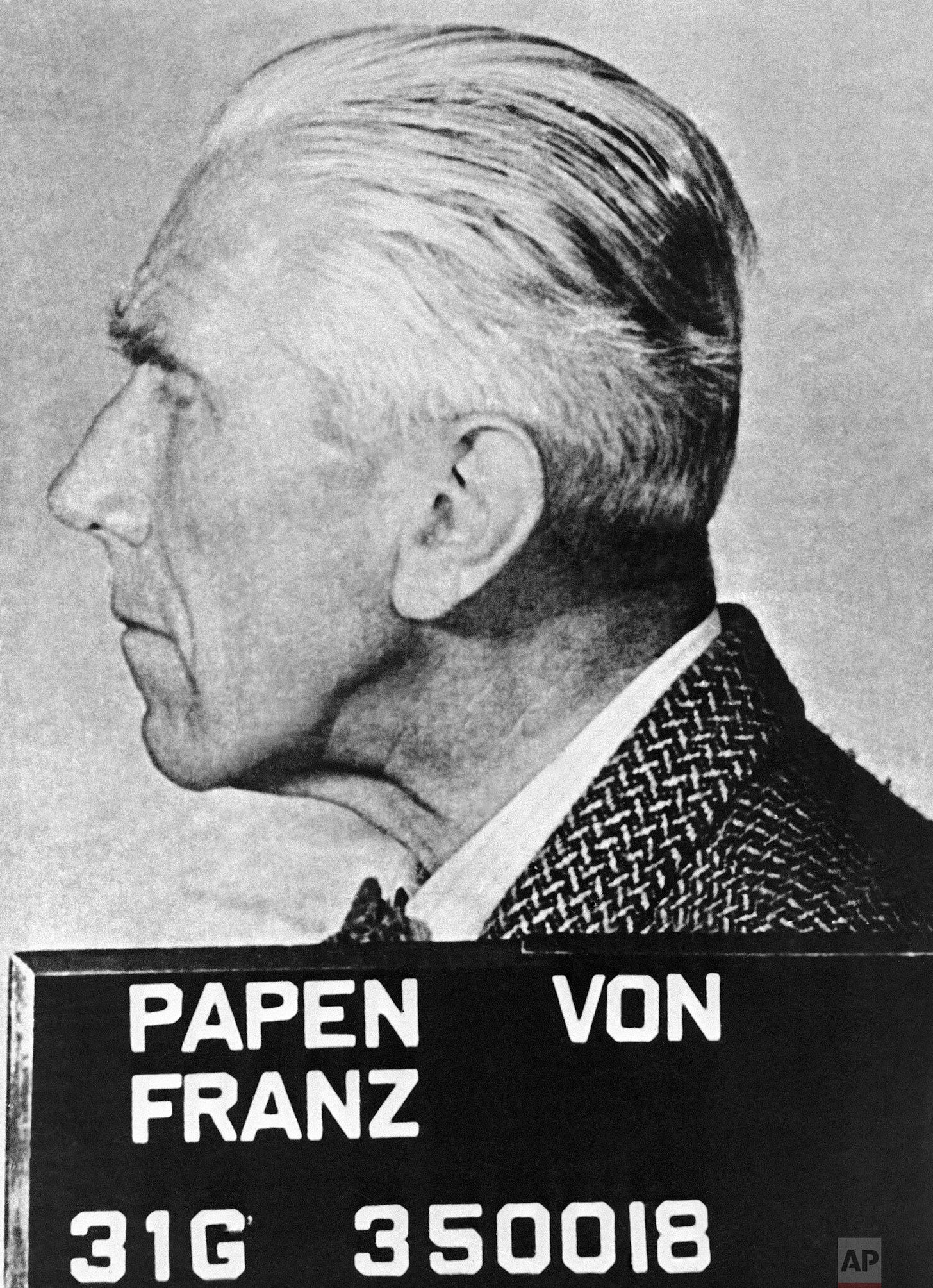
Official portrait of Franz Von Papen, Hitler's political intriguer and last Nazi Ambassador to Turkey, captured November 2, 1945. He stood among the high-ranking Nazi leaders indicted for war crimes at Nuremberg.
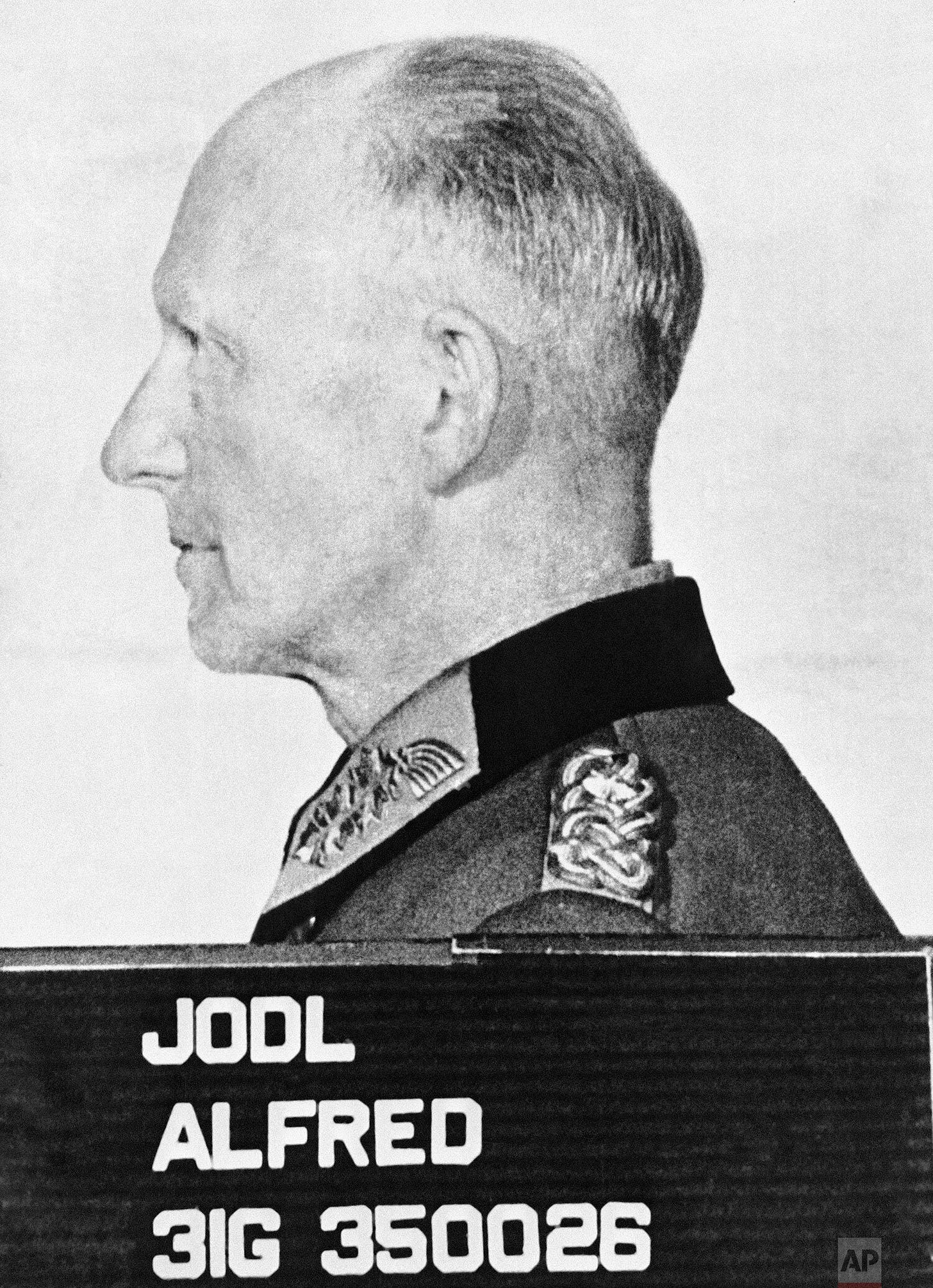
Official portrait of Alfred Jodl, Chief of the Wehrmacht General Staff, taken November 2, 1945. Jodl was a key figure among the Nazi leadership facing judgment for war crimes at Nuremberg.
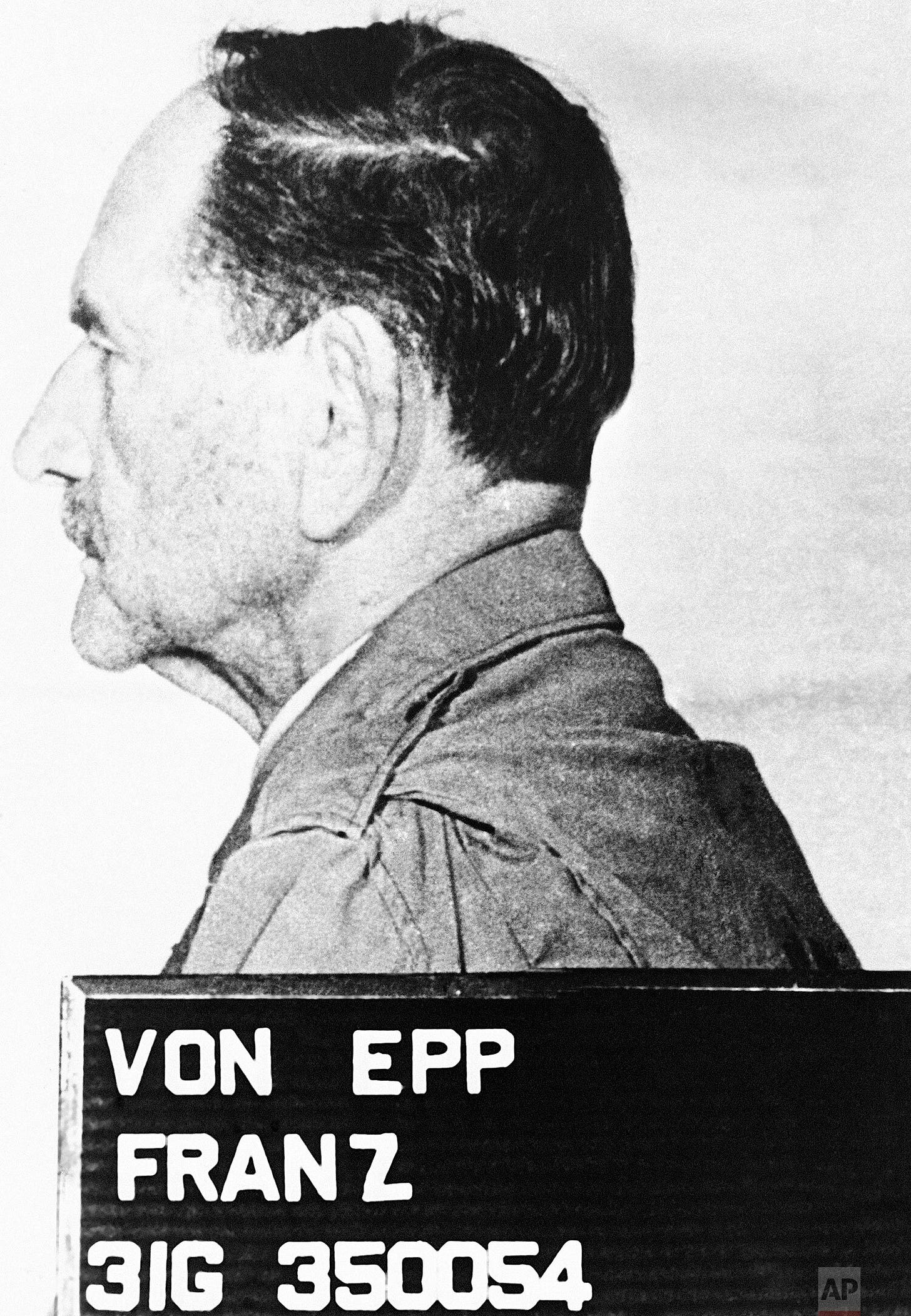
Official portrait of Franz Ritter von Epp, a leader of the National Socialist Movement, photographed November 4, 1945, amidst the post-war accountability.
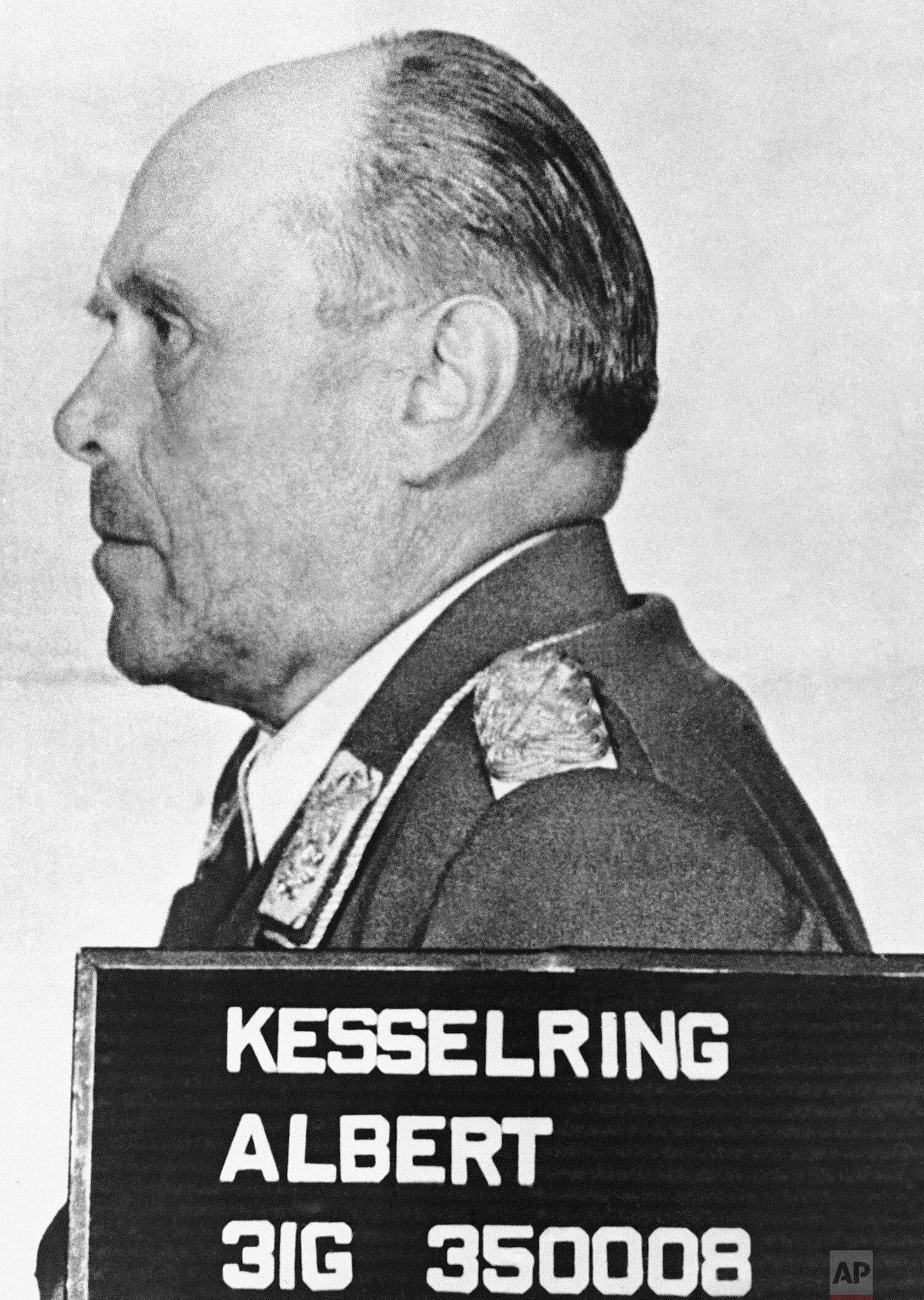
Official portrait of Field Marshal Albert Kesselring, Commander of German forces in Southern Italy, taken November 4, 1945. Kesselring faced justice in the post-war trials that followed World War II.
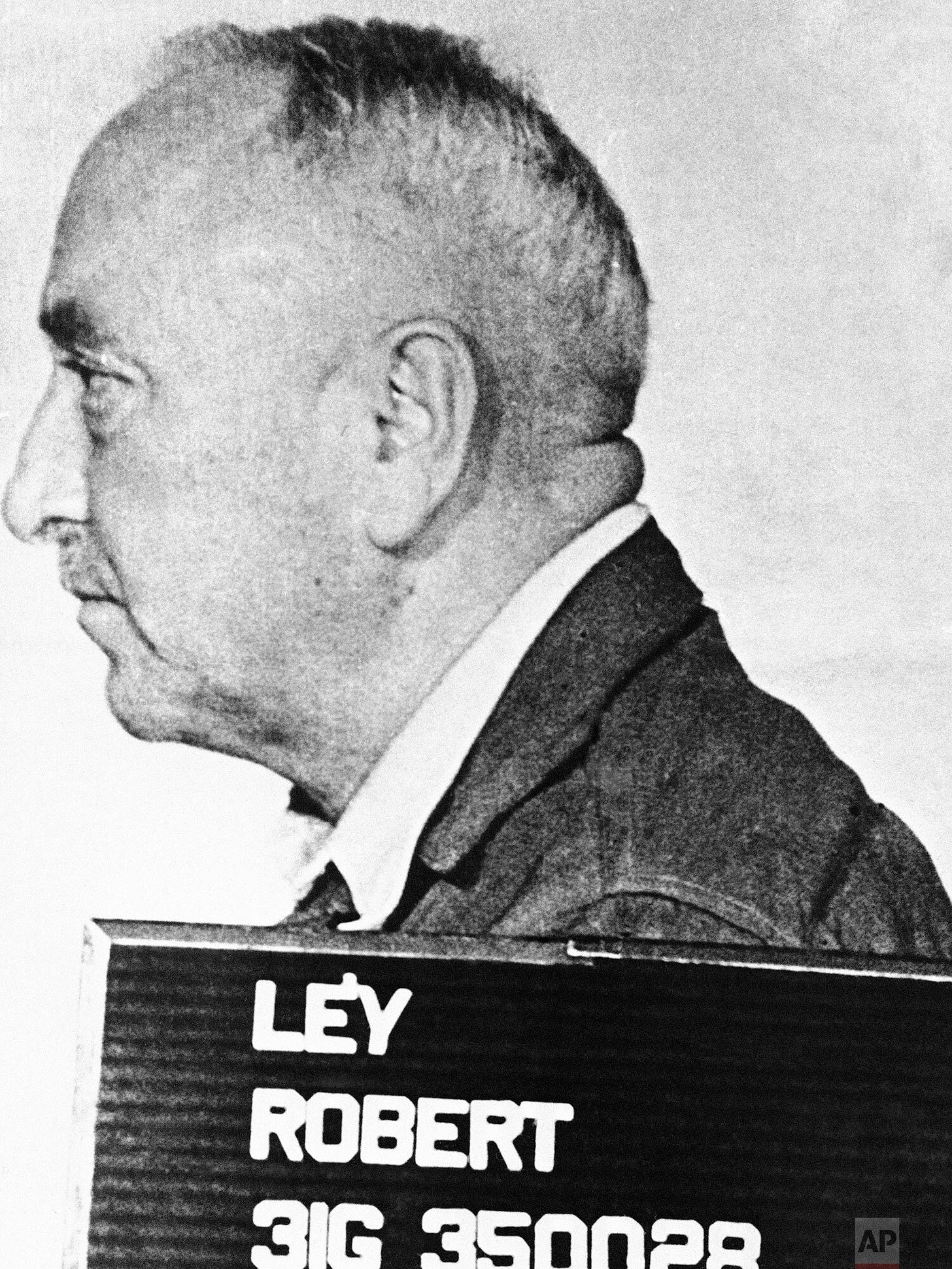
Official portrait of Dr. Robert Ley, Head of the German Labour Front, photographed November 5, 1945. Ley, a high-ranking Nazi official, committed suicide in his cell just weeks before the Nuremberg Trials began, escaping justice.
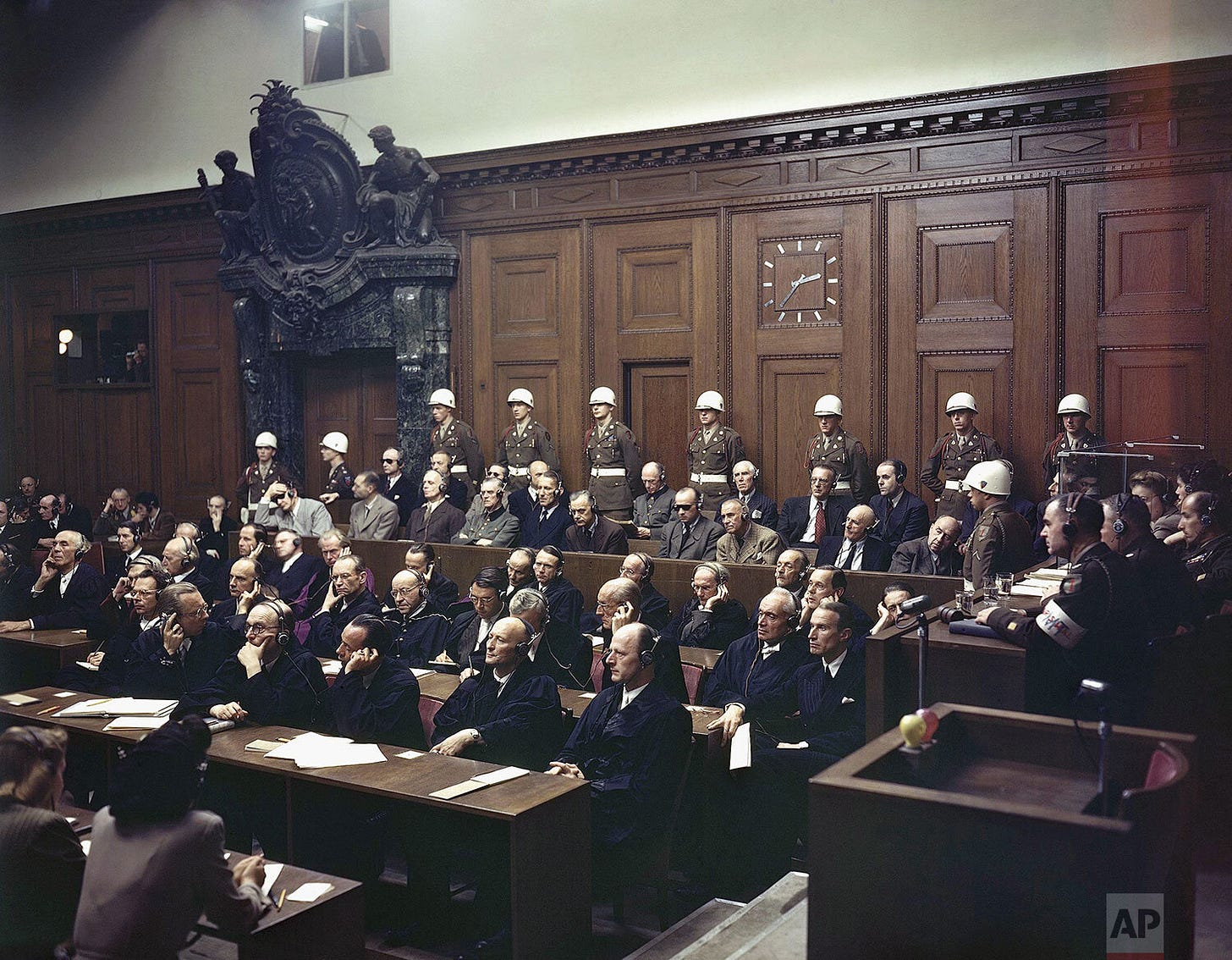
The gravity of the moment: Defendants listen intently to part of their verdict in the Palace of Justice during the Nuremberg War Crimes Trial on September 30, 1946. In the front row of the prisoner's dock, from left: Hermann Goering (wearing dark glasses), Rudolf Hess, and other key figures await their fate.
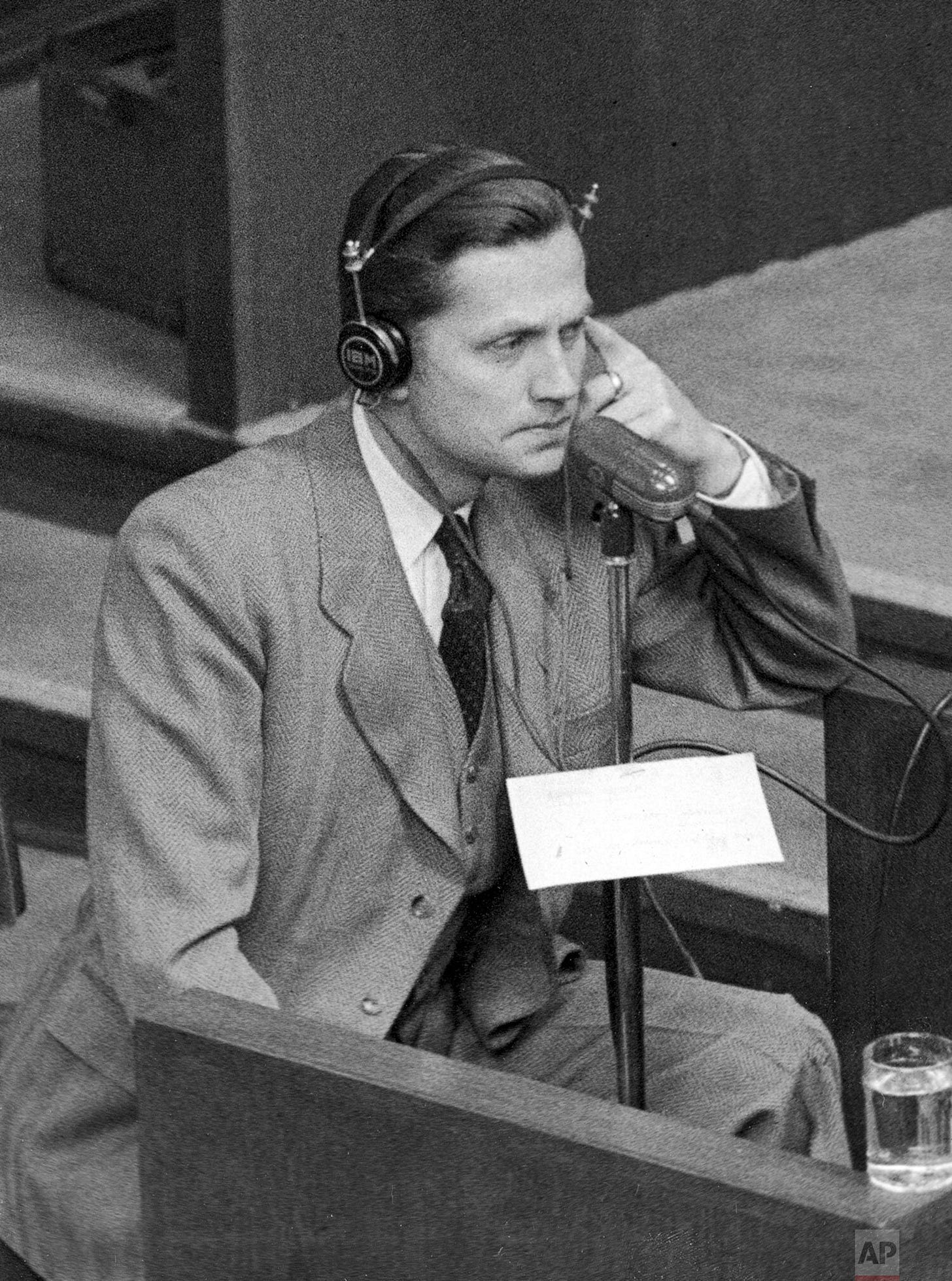
Former SS-Brigadefuehrer Walter Schellenberg, head of foreign intelligence, gives evidence from the witness box during the Nuremberg War Crimes Trials on January 4, 1946, offering insights into the Nazi regime's inner workings.
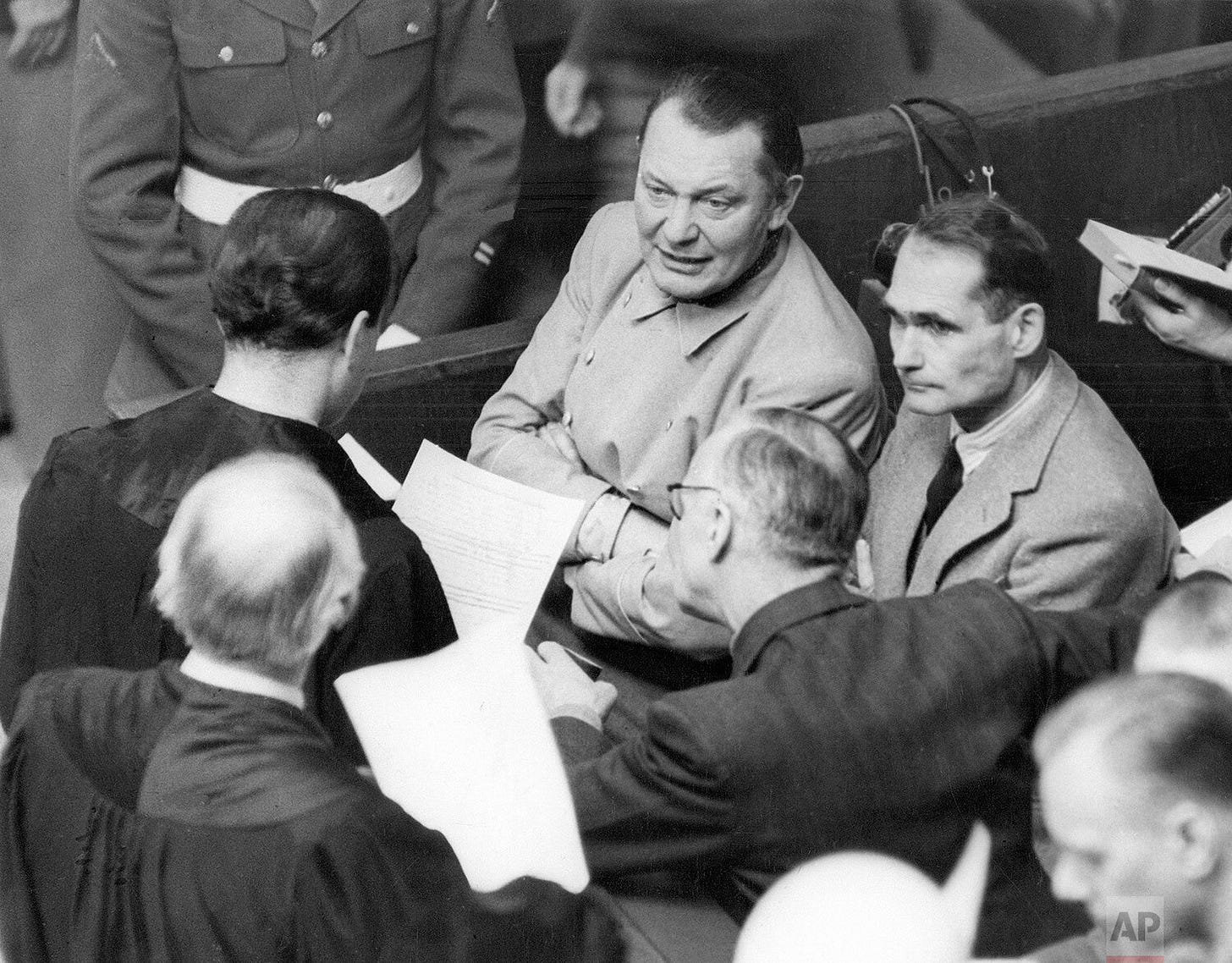
Rudolf Hess, right, engages in a discussion during a Nuremberg trial recess, having requested permission to act as his own attorney. He confers with Goering and other defendants, highlighting the dramatic courtroom dynamics.
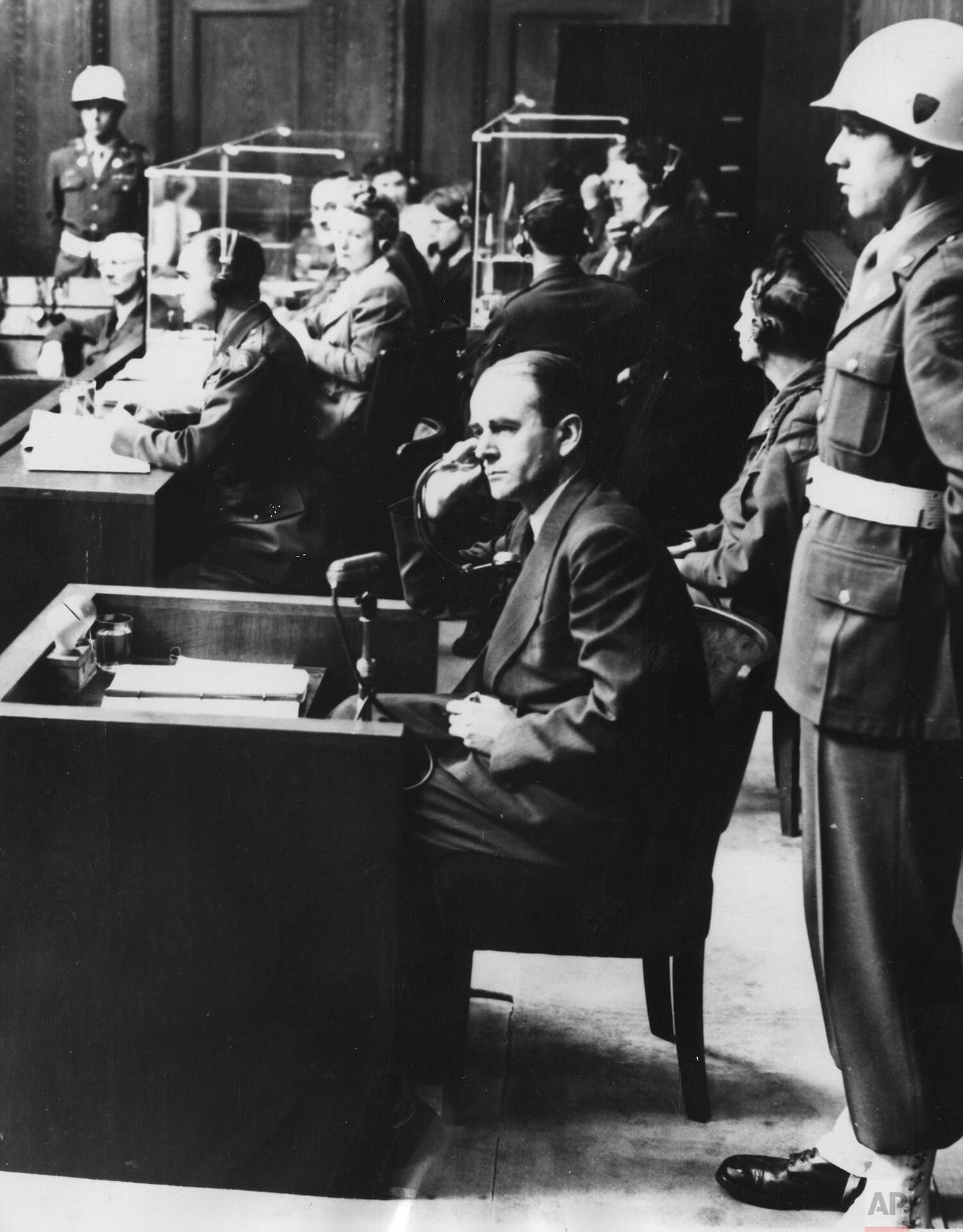
Albert Speer, Hitler's former architect and Armaments Minister, pictured in court during his war crimes trial at Nuremberg on September 12, 1946, facing accountability for his pivotal role in the Nazi regime.
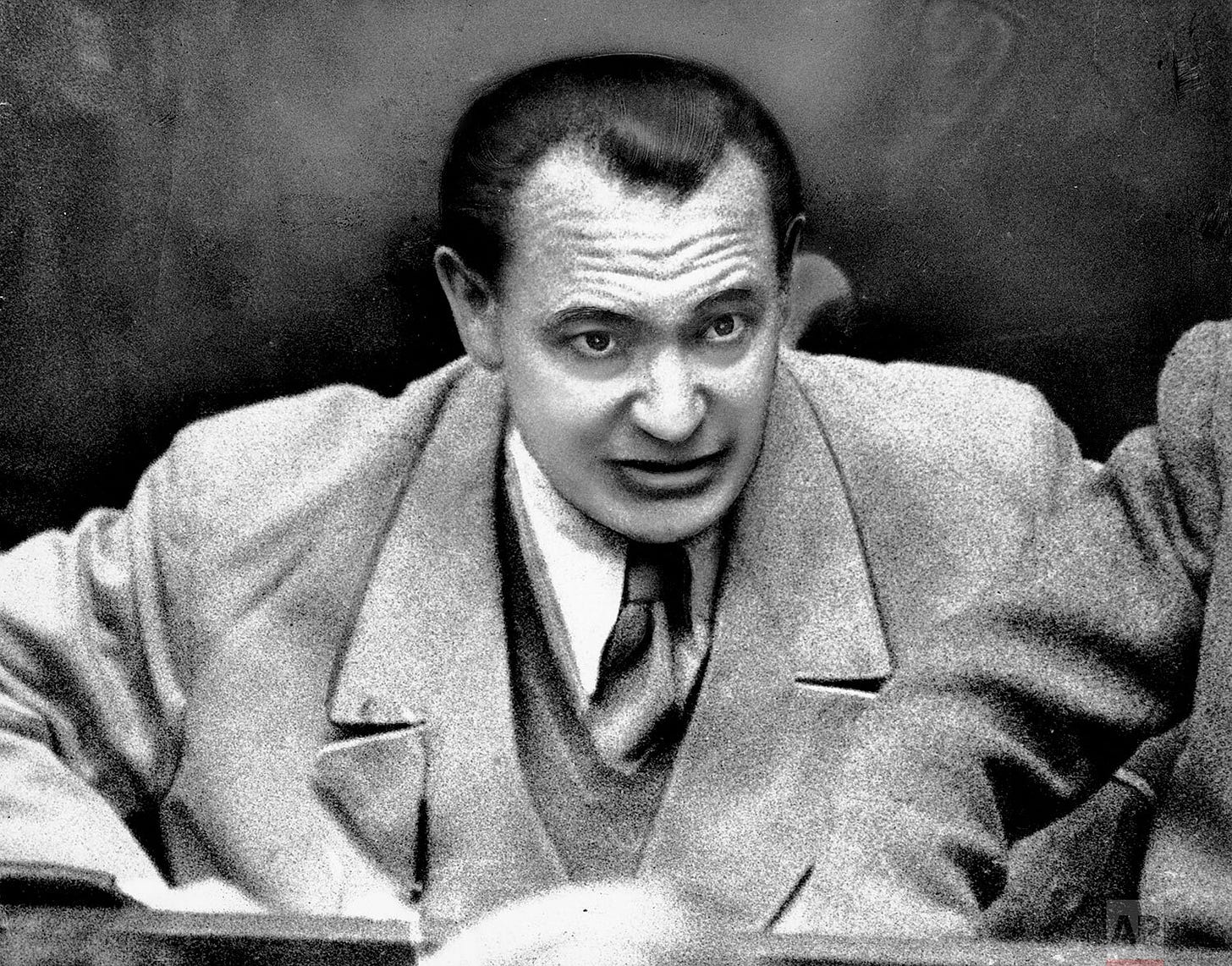
Reichsmarshal Hermann Goering listens intently as portions of the verdict are delivered in the Palace of Justice during the Nuremberg War Crimes Trial on September 30, 1946. In the subsequent final session, Goering was sentenced to death by hanging.
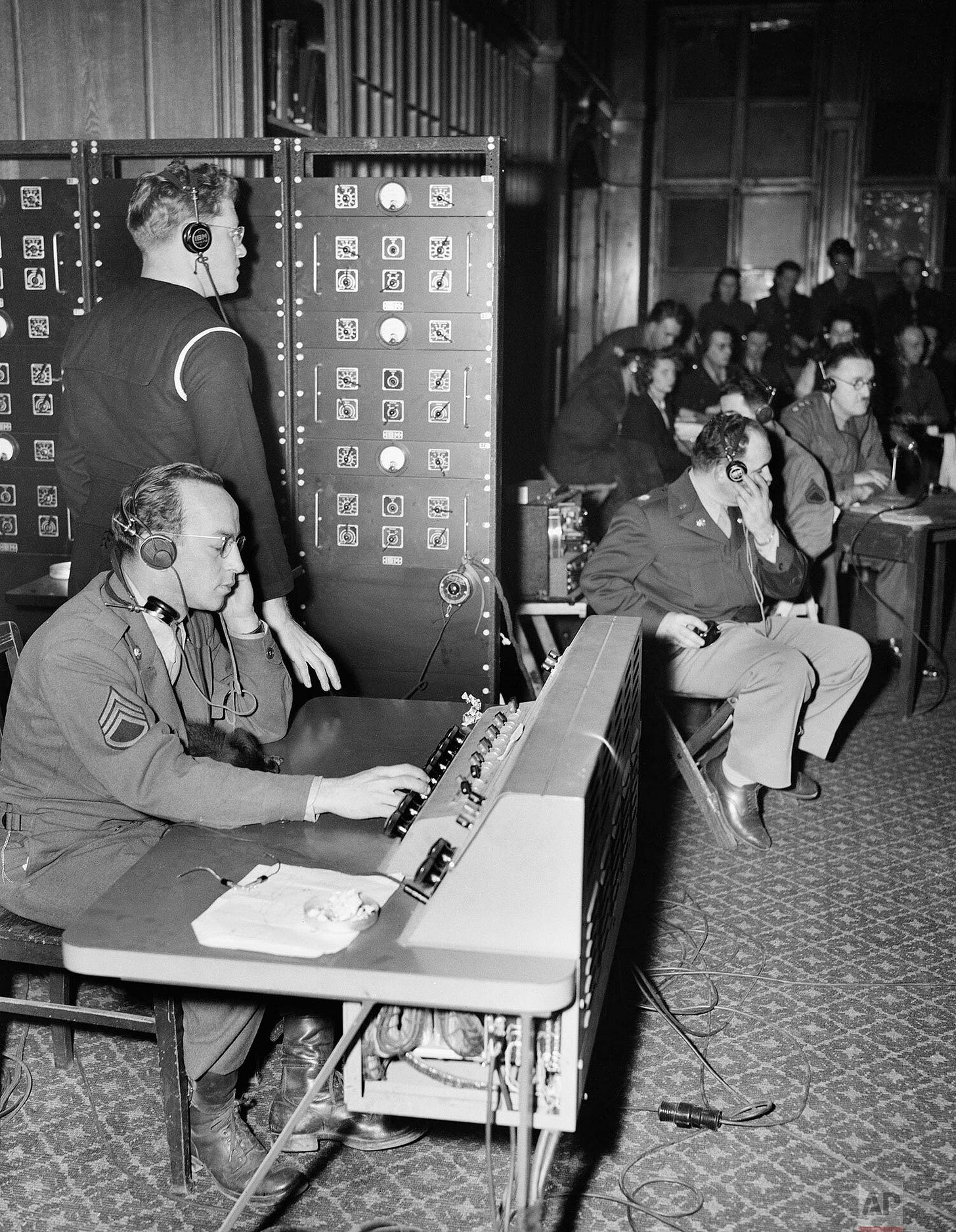
The unsung heroes: Interpreters and audio technicians diligently work behind the scenes at the Nuremberg Trials on November 18, 1945, ensuring seamless communication and accurate record-keeping for the monumental proceedings.
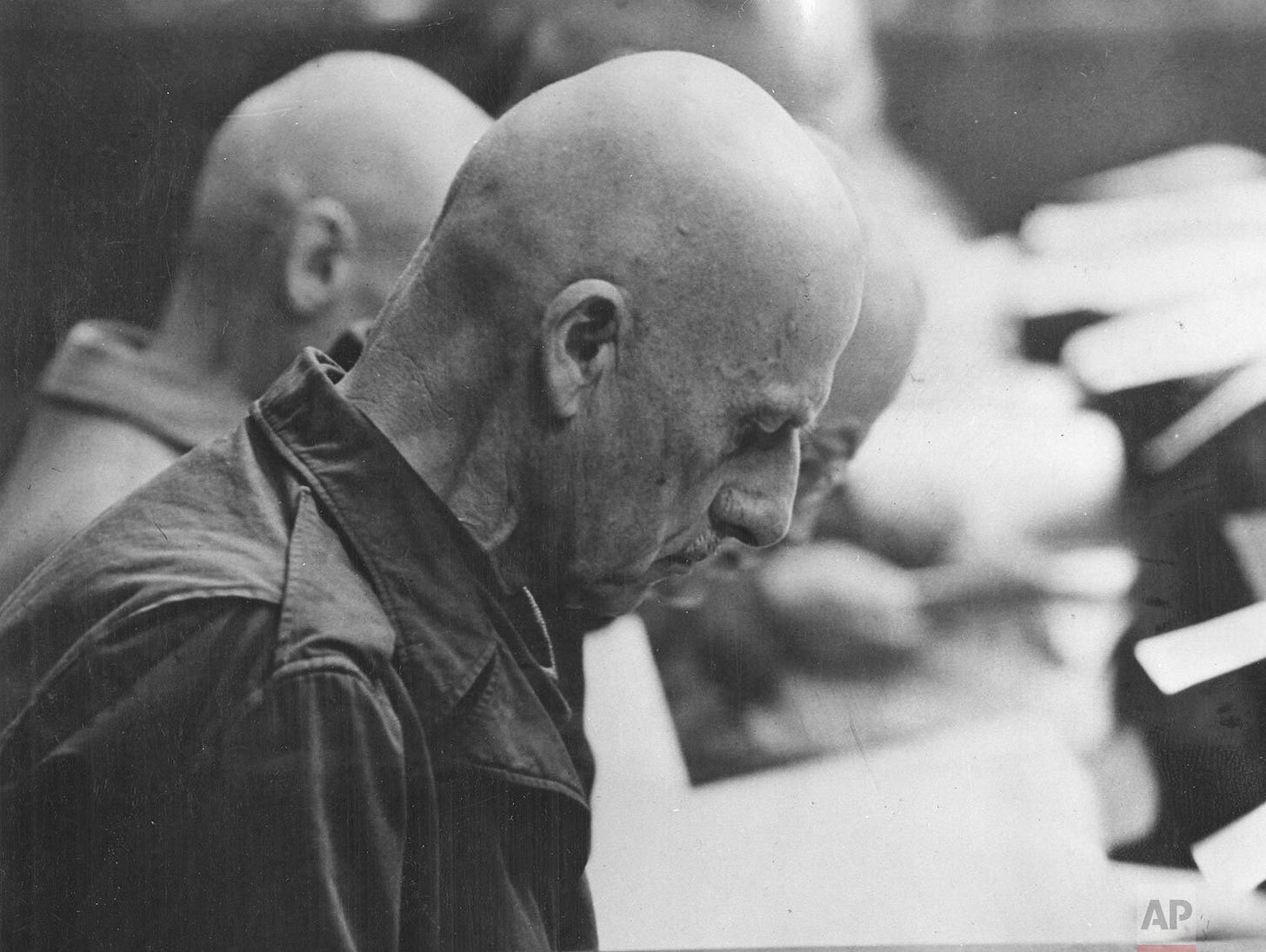
German Field Marshal Wilhelm Leeb during Nuremberg Trials, Case 12, on November 11, 1947, as he reads the accusations against himself and other high-ranking German officers, reflecting the continued pursuit of justice post-IMT.



